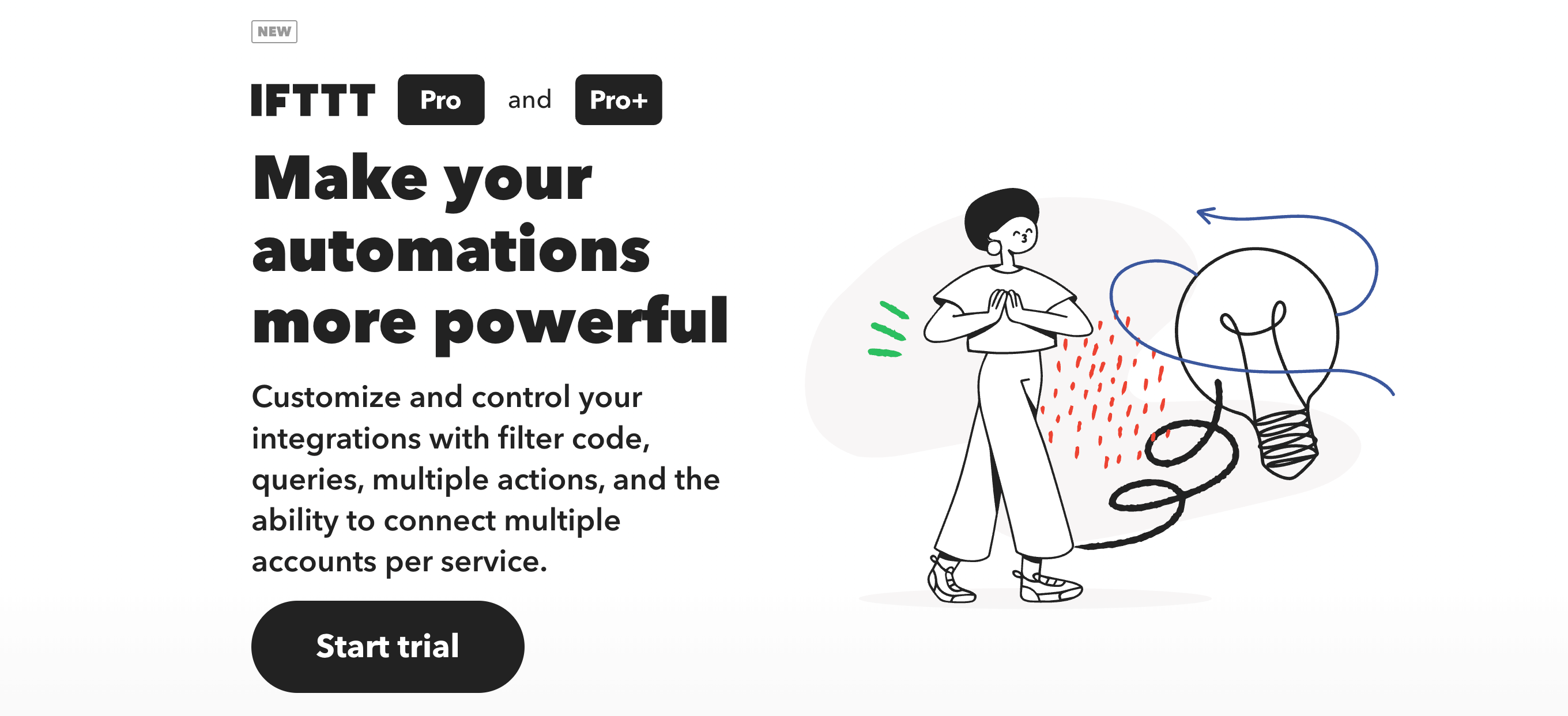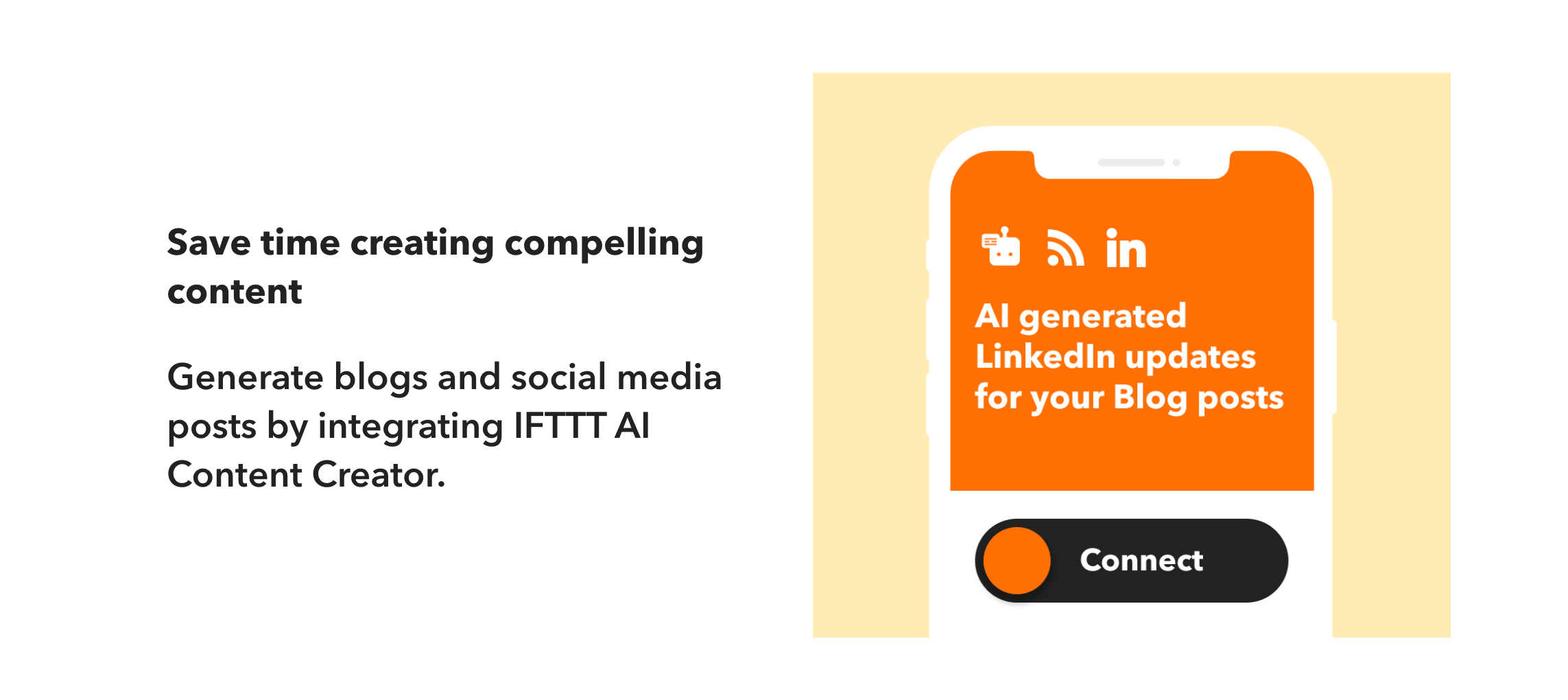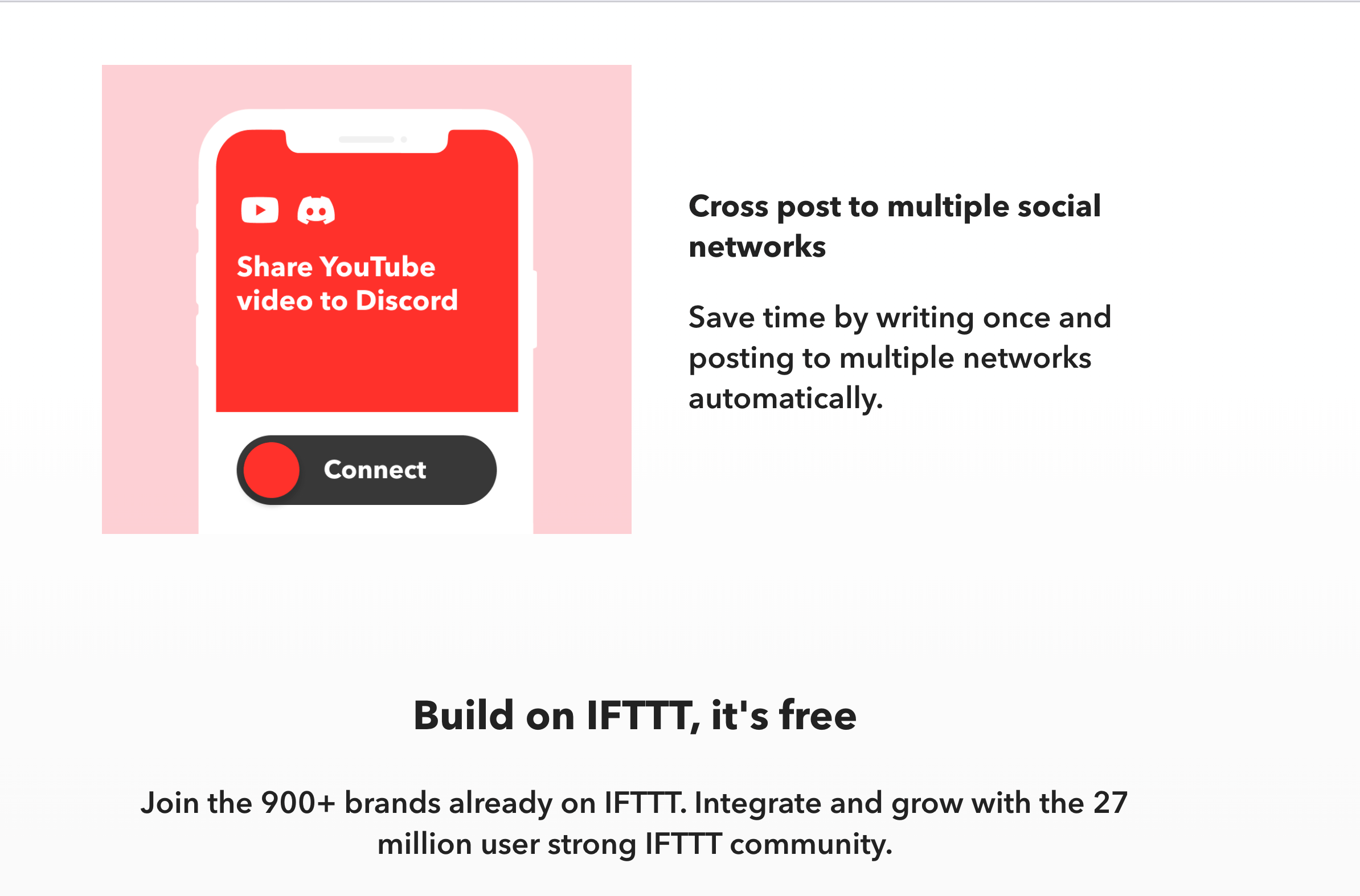










IFTTT
IFTTT, standing for 'If This Then That,' is a web-based service that allows users to create chains of simple conditional statements, called 'applets.'
Tags:AutomationsIFTTT alternatives IFTTT reviewsIFTTT reviews & alternatives 2024,feature,pros and cons,price
What is IFTTT?
IFTTT, standing for “If This Then That,” is a web-based service that allows users to create chains of simple conditional statements, called “applets.” These applets enable a wide range of online services and devices to interact with each other in previously unimaginable ways. IFTTT is designed to automate tasks and streamline workflows by triggering actions in one service when a specified event occurs in another.
IFTTT official site: https://ifttt.com/

Key Features of IFTTT
#### 1. **Simple and Intuitive Interface**
– **Pros**: Makes it easy for users to create applets without needing any coding experience.
– **Cons**: The simplicity might limit the complexity of the workflows that can be created.
#### 2. **Wide Range of Supported Services**
– **Pros**: Offers a vast library of services, including popular apps and IoT devices, expanding the possibilities for automation.
– **Cons**: The availability of some niche or newer services might be limited.
#### 3. **Conditional Statements (Applets)**
– **Pros**: Allows users to define conditions under which actions are taken, offering flexibility in automation.
– **Cons**: Creating complex applets with multiple conditions can become cumbersome.
#### 4. **Free Service with Premium Options**
– **Pros**: Provides a free tier with enough capacity for personal use and casual automation projects.
– **Cons**: To access more tasks and features, upgrading to a premium plan is necessary, which represents an additional cost.
### Target Audience:
IFTTT is designed for a broad audience, including casual users, hobbyists, and professionals looking to automate everyday tasks and integrate their online services and devices. Its ease of use and wide range of supported services make it accessible to users with varying levels of technical expertise.
### Conclusion:
IFTTT stands out as a user-friendly platform for automating tasks and integrating services without the need for extensive technical knowledge. Its strength lies in its simplicity and the breadth of supported services, making it an attractive option for those looking to automate their daily routines and workflows.
feature pros and cons
Evaluating IFTTT, a web-based service that allows users to create automated workflows using conditional statements known as “applets,” involves considering its features in terms of both their advantages and potential drawbacks. This assessment helps in understanding how IFTTT can benefit your automation needs and where it might fall short.
### Key Features of IFTTT:
#### 1. **Simple and Intuitive Interface**
– **Pros**: The user-friendly interface makes it easy for users to create applets without needing any coding experience, lowering the barrier to entry.
– **Cons**: The simplicity might not extend to complex workflows, where users might find themselves needing to delve deeper into the platform’s capabilities.
#### 2. **Wide Range of Supported Services**
– **Pros**: Offers a vast library of services, including popular apps and IoT devices, expanding the possibilities for automation.
– **Cons**: The availability of some niche or newer services might be limited, potentially requiring users to seek alternative solutions or workarounds.
#### 3. **Conditional Statements (Applets)**
– **Pros**: Allows users to define conditions under which actions are taken, offering flexibility in automation.
– **Cons**: Creating complex applets with multiple conditions can become cumbersome, potentially leading to errors or inefficiencies.
#### 4. **Free Service with Premium Options**
– **Pros**: Provides a free tier with enough capacity for personal use and casual automation projects, making it accessible to a wide audience.
– **Cons**: To access more tasks and features, upgrading to a premium plan is necessary, which might represent an additional cost for users with higher demands.
### Pros and Cons Summary:
**Pros:**
– **Accessibility**: Easy-to-use interface and guides make IFTTT accessible even to those without technical backgrounds.
– **Versatility**: Wide range of supported services caters to various automation needs.
– **Flexibility**: Conditional statements allow for customized automation workflows.
– **Affordability**: Free tier makes it accessible for personal use and casual automation projects.
**Cons:**
– **Limitations in Complexity**: The simplicity might not accommodate complex workflows, requiring users to look elsewhere for more advanced automation needs.
– **Limited Service Availability**: Not all apps or services, especially newer ones, may be supported, potentially requiring alternative solutions.
– **Complexity in Advanced Scenarios**: While easy to use for basic tasks, complex applets can become difficult to manage and troubleshoot.
– **Additional Costs**: Premium features may not be necessary for all users, representing an unnecessary expense for those with modest automation needs.
In conclusion, IFTTT is a powerful tool for automating tasks and integrating services, offering a balance between ease of use and flexibility. However, its effectiveness in meeting your specific automation needs will depend on the complexity of your workflows, your budget, and the specific services you intend to integrate.
plan and price

10 alternatives
For those looking to automate tasks and integrate applications similar to IFTTT, there are several alternative platforms available, each with its own set of features and capabilities. Here are 10 alternatives, along with details about what they offer:
### 1. **Zapier**
– **Details**: Known for its simple and intuitive interface, Zapier connects over 3,000 apps, allowing users to automate workflows with “Zaps.”
– **Target Audience**: Small to medium-sized businesses and individuals looking for easy automation between apps.
### 2. **Integromat**
– **Details**: Offers a visual builder for creating complex integrations and automations, supporting a wide range of apps.
– **Target Audience**: Businesses requiring advanced automation and integration capabilities.
### 3. **Microsoft Power Automate**
– **Details**: Part of Microsoft’s suite, Power Automate focuses on integrating Microsoft products with other apps, emphasizing business process automation.
– **Target Audience**: Organizations heavily invested in the Microsoft ecosystem.
### 4. **Workato**
– **Details**: Designed for mid to large enterprises, Workato offers robust integration and automation capabilities, including custom bots and recipes.
– **Target Audience**: Businesses with complex integration needs and larger budgets.
### 5. **Parabola**
– **Details**: Aims to make data transformation and automation accessible to non-programmers, with a focus on data processing and analytics.
– **Target Audience**: Data analysts and teams working with large datasets.
### 6. **Tray.io**
– **Details**: Offers a low-code platform for building custom integrations and automations, with a focus on scalability and reliability.
– **Target Audience**: Businesses looking for scalable, reliable integration solutions.
### 7. **Resilio**
– **Details**: Specializes in IT service management (ITSM) and IT operations management (ITOM) integrations, helping organizations streamline their IT processes.
– **Target Audience**: IT departments focused on ITSM and ITOM.
### 8. **Syncari**
– **Details**: A data unification platform that syncs, cleanses, and enriches data from various sources, helping businesses maintain accurate and consistent data across their systems.
– **Target Audience**: Businesses struggling with data silos and inconsistencies.
### 9. **Cyclr**
– **Details**: Provides a developer-focused API integration platform, allowing businesses to build custom integrations quickly and securely.
– **Target Audience**: Developers and tech-savvy businesses looking for a programmable integration solution.
### 10. **N8n**
– **Details**: An open-source automation platform that allows you to connect apps and services, offering a visual editor for creating workflows.
– **Target Audience**: Tech enthusiasts and businesses looking for a customizable, open-source solution.
Each of these platforms offers unique features and capabilities, catering to a wide range of integration needs from simple automation to complex data processing and system integration. Depending on your specific requirements, such as the complexity of your integrations, your budget, and the types of applications you’re working with, one of these alternatives may be a better fit than others.


